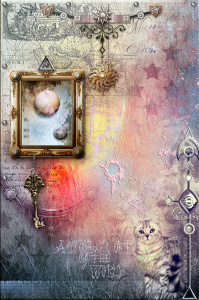(Honestly, I have no idea what this thing’s title is anymore. But I’ve been working on the beginning today. Some of you will recognize the pov character as the gladiator Bella Kanto, although this is the first time I’ve tried first person with her. I like it. Anyhow, here you go.)
A blade straight through the air. Sidelong, slicing the snowy air in half.
Roll back on the heels, keeping the spine straight. Distance doesn’t matter, as long as steel isn’t colliding with eyeball, even if it’s close enough to brush an eyelash free.
Step step back, shift weight inside that left greave. Use the little shield, shaped like a snowflake, just as intricate. So easy to snag a blade with it, but I have to be careful with that, The shield’s just as prone to being broken as breaking, maybe even more if the blade were thick. I’ve done that more than once, Last year it snapped lucky, sent a blade flying up into Spring’s face, almost put her eye out, left a nasty gash the width of my little finger away from the orb.
Snow crunch underfoot from the still falling snow. My day, solid winter. The season of my power. The reason I wear Winter’s armor, crystal and steel against Spring’s gaudier garb, all spring blossoms in yellow and pink and blue. Like fighting a flowerbed.
No wonder I’d won for the last twenty-four years against that gaudy thing, no matter who inhabited it each year. Winter’s lines were clear and sharp and swift. The floral armor was heavier, with its lines of gold mesh over the pearly surface.
Click click click, blades testing each other. Meanwhile my arm comes out, rotates just a little to snare her swordpoint, swivels and snaps back in place, while my blade pushes forward at the same time. Don’t give her a moment to breathe, no time to think, press in fierce and hot and ardent as a yearling bull.
Enjoy this sample of Cat’s writing and want more of it on a weekly basis, along with insights into process, recipes, photos of Taco Cat, chances to ask Cat (or Taco) questions, discounts on and news of new classes, and more? Support her on Patreon.





